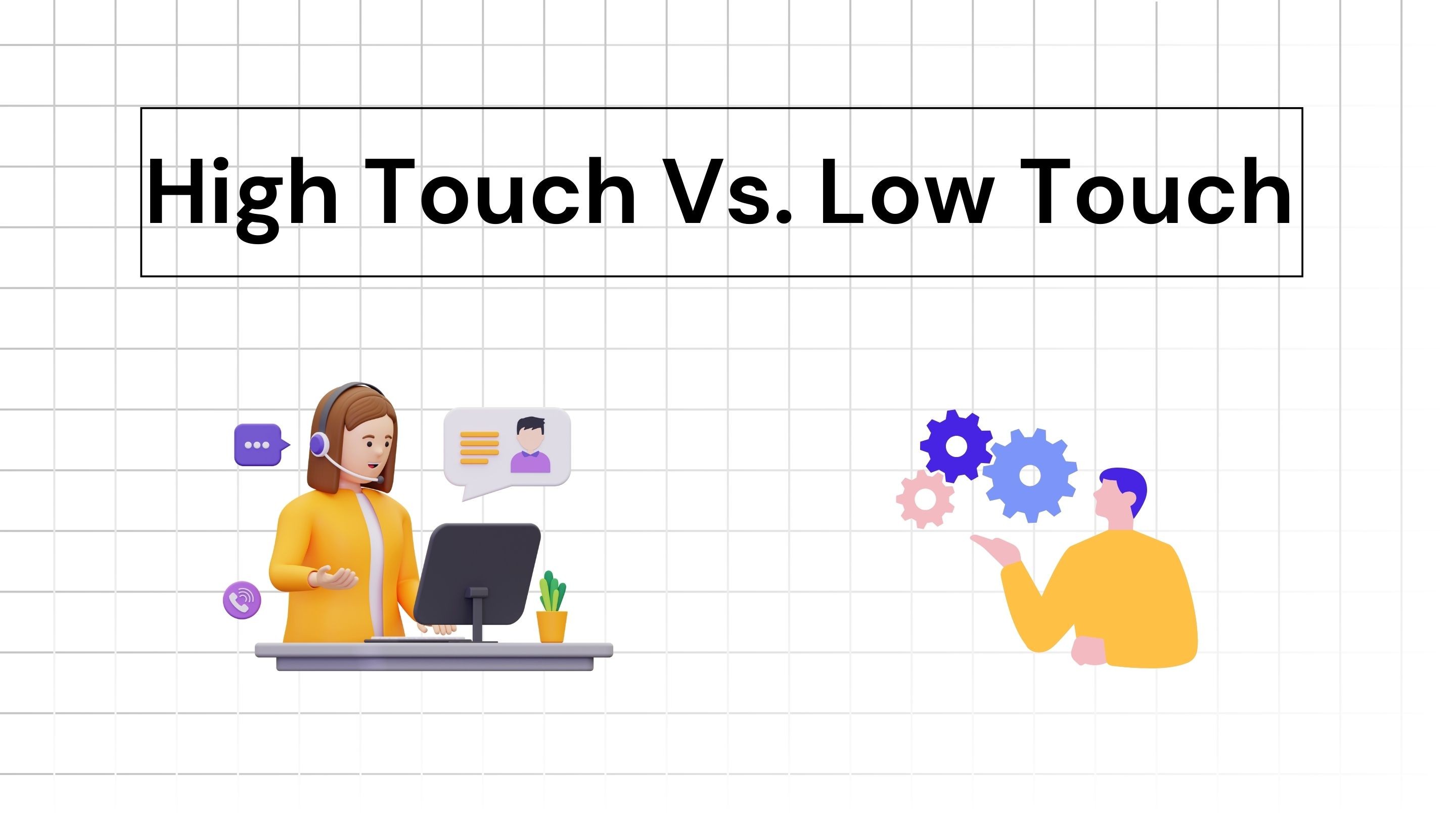
Iterate AI
Jan 26, 2025
What do you want your customers to remember about your touchpoints? Was it personal with humans (high-touch) or was it fast and automated (low-touch)?
That’s what you need to decide–how to engage with your customers. Two common approaches are high-touch and low-touch engagement models.
In short, high-touch has more human touch and low-touch has more automation. Both have advantages and challenges, and choosing the right one depends on your product, target audience, and business goals.
Often, the most effective strategy combines the two, let’s learn how.
What is a High-Touch Model?
A high-touch model emphasizes personal, hands-on interaction with customers throughout their journey with your product. The touchpoints are direct between the customers and the customer support team. It is human-driven communication and check-ins to ensure customer satisfaction and success.
Characteristics of high-touch models:
Hands-on onboarding: You give customers personalized assistance via a dedicated customer success manager with product knowledge (CSM) or onboarding manager for product setup and adoption ensuring initial usage. They also address customer concerns and optimize their experience.
Frequent and direct communication: CSMs give regular updates via emails, calls, or meetings and keep the customer informed and engaged. They also look for potential issues and address them before they escalate.
Relationship-driven: Building long-term relationships is a key focus. Strategies are built to align with the customer’s specific objectives to ensure success and value realization. This works best for premium products with higher price points.
Pros of high-touch models:
Deep customer relationships and personalization: Direct interaction builds trust and loyalty. Provides the flexibility to address specific customer needs.
Upselling opportunities: Close relationships can uncover additional needs and opportunities for expansion.
Cons of high-touch models:
Resource-intensive: High-touch models require a considerable investment in skilled personnel, training, and ongoing customer support. As the number of your customers grows, you need to hire more people which can be unsustainable for you. The growth will be linear.
Higher costs: The cost per customer can be higher compared to low-touch models. These costs can include salaries for customer success teams, travel for on-site support, and resources for customized implementations, making high-touch models less feasible for low-margin products.
What is a Low-Touch Model?
A low-touch model relies on automation, self-service options, and minimal direct interaction between the company and its customers. This approach is scalable making it ideal for businesses with high-volume customer bases.
Characteristics of low-touch models
Self-serve onboarding: Your customers are guided through setup via tutorials, knowledge bases, or in-app instructions.
Automation-focused: To be completely automation-dependent, the product needs to be fully mature. In that case, you can have self-onboarding automation-based email sequences, chatbots, and other tools to provide support.
Scalability: It works best to handle a large number of users with minimal human intervention. Ideal for low-margin products.
Pros of low-touch models
Scalability and faster onboarding: It is easy to serve a large customer base with minimal resources as you can set up automation. Customers can quickly get started without waiting for human intervention.
Cost-effective with consistency: Automation reduces operational costs. Automated processes ensure uniform customer experiences.
Cons of low-touch models:
Limited personalization: Customers with unique needs may feel underserved.
Lower engagement: Lack of direct interaction can lead to weaker relationships.
Higher churn risk: Without proactive engagement, customers may disengage or fail to realize the product’s full value.
Why a Mix of Both Models is Often the Best Strategy
Combining the two approaches yields the best results as you can optimize for both efficiency and satisfaction.
Benefits of a hybrid approach:
Customer segmentation: High-touch engagement for enterprise or premium customers, and low-touch for smaller accounts or self-serve users.
Flexibility: The ability to scale while still offering personalized experiences where it matters most.
Cost optimization: Allocate resources efficiently by focusing high-touch efforts on high-value accounts. Growth does not have to be linear as you can scale with automation and CSM can take direct customer interactions will be minimal in comparison with high-touch model.
Improved customer journey: Automation can handle routine tasks, freeing up teams to focus on complex, relationship-driven interactions.
Here are some ways to both high and low touch
Tiered support: Offer a basic self-service model for most users but provide dedicated account managers for enterprise clients.
Automate the standard phases: Use automation for standard processes and escalate specific issues to human support when needed.
Event-triggered engagement: Automate regular interactions but initiate personal outreach during critical moments, such as contract renewals or product upgrades.
Which Touch Model Fits Your Business?
We don’t suggest going for either only high-touch or low-touch. The best approach is a mix of both as you will fall behind if you don’t standardize and streamline the initial phases such as raising a support ticket or asking a query through a bot. However, there are a few things you can consider:
Complexity and maturity of the product
High-touch is better for products that require significant setup, customization, or training. Any product that needs heavy implementation, setup, customization, or training requires a high touch. For example, a sales commission software or CRM. High-touch is critical during the onboarding and renewal phases.
Low-touch works well for fully mature plug-and-play solutions with minimal onboarding requirements. Low-touch can maintain engagement during stable, ongoing use.
Price point
Your investment in High-touch models needs to be justified. It is better for premium-priced products where the investment justifies the cost of personalized support.
Low-touch models align with low-cost, high-volume strategies.
